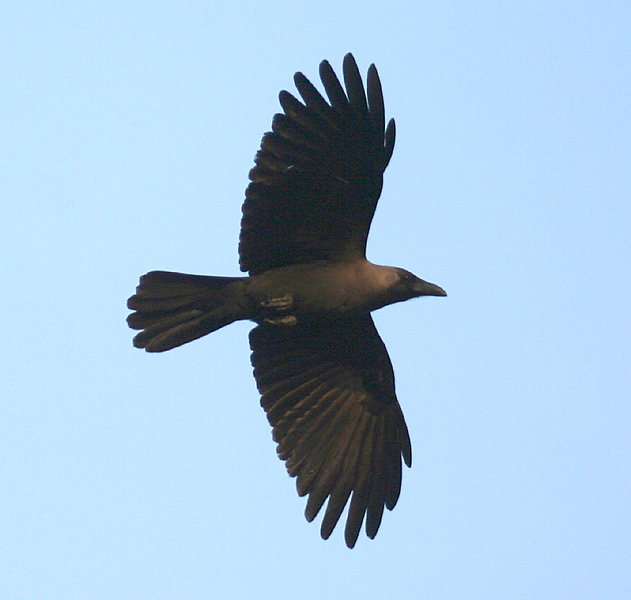Colours
Distinguishing features
The forehead, crown, throat and upper breast are a richly glossed black, whilst the neck and breast are a lighter grey-brown in colour. The wings, tail and legs are black. There are regional variations in the thickness of the bill and the depth of colour in areas of the plumage. (Wikipedia)
Size
- From 40 cm to 43 cm (Length of specimen)
Wingspan
- Wingspan data is not yet available.
Synonyms
Distribution
Distribution and habitat preferences
It is of Asian origin but now found in many parts of the world, where they arrived assisted by shipping.
It has a widespread distribution in southern Asia, being native to Nepal, Bangladesh, India, Pakistan, Sri Lanka, Maldives and Laccadive Islands, South West Thailand and coastal southern Iran. It has been introduced to East Africa around Zanzibar (around 1897[3]) and Port Sudan, and arrived in Australia via ship but has up to now been exterminated. Recently it has made its arrival in Europe and has been breeding in the Hook of Holland since 1998. (Wikipedia)
Audio recordings
Diet
It feeds largely on refuse around human habitations, small reptiles and other animals such as insects and other small invertebrates, eggs, nestlings, grain and fruits. Crows have also been observed swooping down from the air and snatching baby squirrels. Most food is taken from the ground, but also from trees as opportunity arises. It is a highly opportunistic bird and given its omnivorous diet, it can survive on nearly anything that is edible. These birds can be seen near marketplaces and garbage dumps, foraging for scraps. (Wikipedia)



